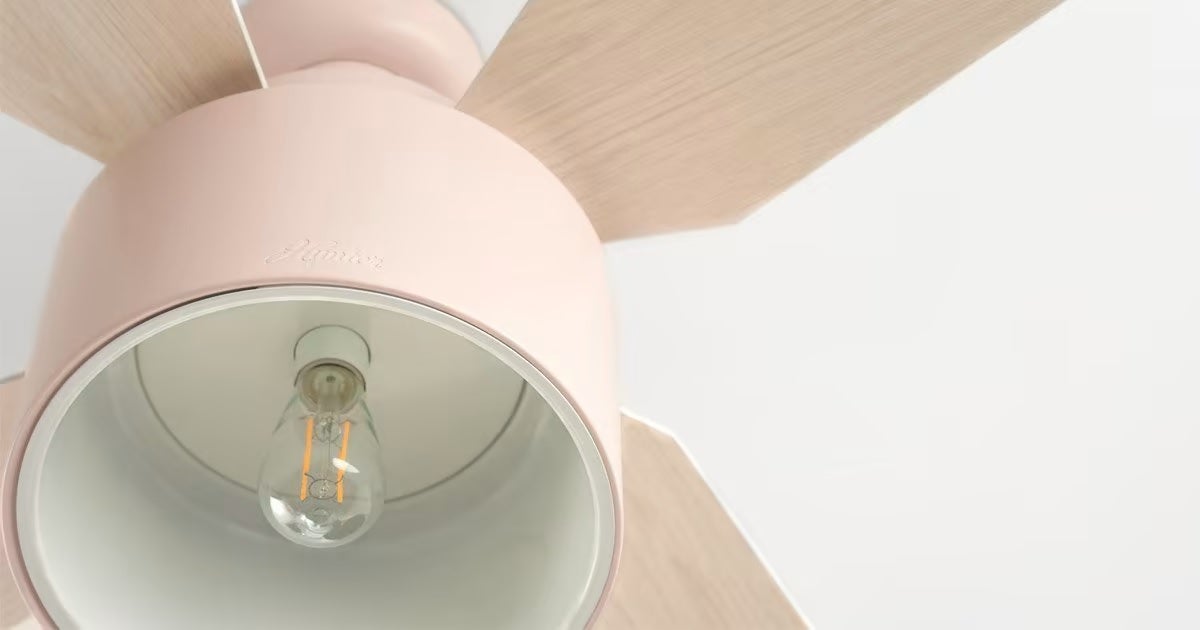
Changing your ceiling fan direction seasonally is one of thesimple ways to get the most out of your ceiling fan. The ceiling fan directionin summer should be counterclockwise to help create a downdraft, which createsthat direct, cooling breeze. Your fan direction in winter needs to be clockwiseto create an updraft and circulate warm air around the room.
How do you change the ceiling fan direction? It’s easywhether you use the ceiling fan switch, push button control on the fan remote,or use voice commands with your smart fans.

Ceiling fan direction in summer
breaks down like this:
• Ceiling fandirection summer = counterclockwise (downdraft)
• Ceiling fan direction winter =clockwise (updraft)
To keep cool in summer, your ceiling fan should spin counterclockwise.The counterclockwise direction combined with the blade pitch on fans createsdowndraft, which you feel as that welcoming, cool breeze in summer.

How can you tell which direction your ceiling fan isspinning? Stand underneath the fan and look up to watch the ceiling fan bladesspin. If it’s in summer mode, the ceiling fan blades will be moving from rightto left (counterclockwise). You’ll be able to feel the coolest, most directairflow if it’s spinning the correct way.
Ceiling fan direction with air conditioning
Having your ceiling fan spinning in the right direction insummer is important for your comfort and energy bill. Ceiling fans cause whatour engineers and technicians refer to as the “wind chill effect.” Basically,when the air hits your skin, it speeds up evaporation of moisture on your skinand makes you feel cooler. It’s a lot like when you have an open window in amoving car.
Because of the wind chill effect making you feel cooler,simply using your fan while you’re in the room allows you to turn up thethermostat two degrees. For example, if your thermostat is set to 27 degrees,the fan can make you feel like it’s around 24 degrees. Your air conditionerdoesn’t have to work as hard when a ceiling fan is used, meaning you can saveup to 47 percent on your cooling costs.
Ceiling fan direction in winter

In the winter, ceiling fans need to spin clockwise on lowspeed (any faster and you’ll start to feel a cool breeze). This creates anupdraft that helps move warm air trapped near the ceiling back out and aroundthe room. This is especially helpful in rooms with vaulted ceilings.Recirculating the warm air will help your heating unit run less often, meaningyou could save roughly 15 percent on your heating costs.
Check if your fan is in winter mode by standing under it andwatching the blades spin. The blades should be rotating from left to right(clockwise). You can also stand directly under the fan while it’s on highspeed; whichever way you feel the least amount of cool air is the correctdirection.
How to change the ceiling fan direction

Depending on your fan model, there are a few ways for how tochange your ceiling fan’s direction. Regardless of fan type, you want to turnyour fan off and let it come to a complete stop before changing its direction.
Switching direction for pull chain fans
Fans with pull chains have a reversing fan switch thatyou’ll use to change the direction.
1. Turn offthe fan and let it come to a complete stop.
2. Check thefan body or light fixture for the fan switch.
3. Slide theswitch to the opposite direction.
4. Turn thefan back on; replace any light glass you had to remove to get to the fanswitch.
Switching direction for ceiling fans with remotes
Hunter fans with handheld remotes have an innovative pushbutton reverse option that makes it easy to change the ceiling fan directionwithout a ladder. Make sure your remote is paired to your ceiling fan.
1. Turn offthe fan and let it come to a complete stop.
2. Press andhold the fan button on the handheld remote control. The light on the controlwill blink when it’s successful.
3. Turn thefan back on.
Like the rule for changing the batteries in your smokedetector, a good reminder for when to change your ceiling fan direction duringDaylight Savings Time. When we “spring forward,” make sure your fan is spinningcounterclockwise. When we “fall back,” change your fan direction to winter modeand have it spinning clockwise.


